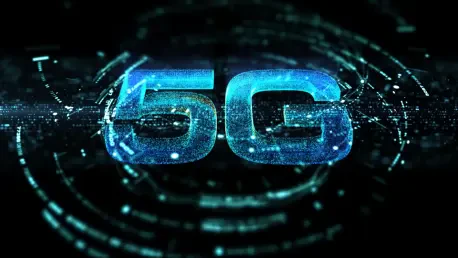The current technological environment is increasingly focused on the costs associated with deploying fifth-generation mobile networks, or 5G. The debate surrounding spectrum costs—a crucial element of 5G deployment—has gained significant traction. The GSMA, an influential organization advocating for telecommunication stakeholders worldwide, has made bold claims regarding the financial burden these costs impose on telecom operators. Their contention sparks discussions around whether these expenditures might impede industry growth and ultimately affect consumer services. Spectrum constitutes the critical infrastructure that sustains wireless communication; hence, the costs tied to acquiring this resource are fundamental to telcos’ business models. Considering historical auction figures and evolving economic landscapes in the telecom sector, the discourse investigates whether the GSMA’s assertions reflect an undue strain on industry progress or offer an opportunity for innovation and market adaptation. Balancing high expenditure with technological advancement is pivotal for telcos striving to meet increasing data demands efficiently.
Historical Context and Spectrum Auction Trends
Historically, telecommunication spectrum auctions have shown varying cost patterns, making it challenging to draw definitive conclusions about their consistency. Comparing costs across different mobile technology generations reveals an intriguing trend. Specifically, there is evidence of declining costs per megahertz (MHz), a standard method for pricing spectrum, suggesting improved cost efficiency over time. Although the total expenditure on spectrum has escalated, this trend indicates a relative decline in cost intensity concerning each unit of spectrum procured. Looking at notable examples like the United Kingdom’s 2021 auction, which raised approximately £1.355 billion ($1.8 billion), the trend aligns with this decline in absolute costs compared to previous auctions for 3G and 4G, suggesting potential for more economically viable deployment of 5G networks. However, regional discrepancies exist, as illustrated by contrasting experiences in countries such as Italy and Germany, where some auction structures seemingly amplified costs, yielding burdensome financial implications for telcos operating within those markets.
The GSMA’s primary assertion—that spectrum costs have sharply inflated—is juxtaposed with examples of low-cost spectrum procurement. Despite this, the broader consideration must encompass the substantial decline in average revenue per gigabyte of consumed data predicted over the coming years. Nearly a 96% drop has been forecasted between 2014 and the present day, driven by increasing data consumption. This decrease challenges the significance of per-GB revenue as a metric, with most telecom operators offering generous data limits or unlimited usage under fixed subscription rates. The surging demand for data reshapes perspectives on diminishing per-GB revenue, suggesting a shift away from traditional paradigms to adapt business models accommodating increased bandwidth needs. Therefore, the discourse must scrutinize spectrum costs within the context of market reality and industry efficiency, asserting whether these financial obligations translate into actual impediments for progression.
Expanding Demand and Telcos’ Strategic Ridge
The GSMA points to increased global cumulative spectrum costs over recent years, with figures purportedly rising by 63%. Yet, cautions persist over the interpretation of these statistics, given the potential misrepresentation of cumulative costs along an extended timeline while incorporating new spectrum auctions and associated expenditures. Analogies have drawn parallels between this trend and personal spending patterns, implying inherent, steady rises in cumulative costs as investments continue without corresponding revenue explosions. Moreover, telecom companies have inevitably enhanced their spectrum holdings. This expansion is universally regarded as essential to accommodate growing bandwidth demand—a notion widely recognized and mostly unchallenged within industry circles. Nonetheless, a unique observation revolves around the timing and appropriateness of continued spectrum investment despite a noted slowdown in data traffic growth and reduced expenses linked to radio access network implementations. Identifying these dynamics fosters a comprehensive understanding of telcos’ decision-making processes concerning spectrum acquisition amidst changing market conditions.
The GSMA offers critical views regarding the strategic structuring of spectrum auctions, claiming revenue-maximizing approaches benefiting governments have underestimated telcos’ financial capabilities. This critique positions telcos as viewed less through the lens of public service providers and more as taxable entities. Still, auction outcomes rely ultimately on telco discretion and financial readiness to meet proposed cost demands, illustrated by a notable decrease of 75% per MHz in certain bands over recent years. These insights foster debate over balancing governmental aspirations against telcos’ operational realities and their capacity to adapt cost structures under shifting technological paradigms. While the GSMA’s criticism targets governmental strategies favoring high returns, considerations of auction dynamics promote nuanced analysis, emphasizing optimization without undermining industry growth prospects vital for advancing telecommunications efficacy amidst rising data consumption.
Future Considerations and Industry Prognosis
In today’s tech-driven world, the focus on the expenses tied to deploying 5G mobile networks is growing. Central to these discussions is the cost of spectrum, a vital component essential for 5G deployment. The GSMA, a significant entity representing telecommunications stakeholders globally, has spotlighted the financial strain these costs impose on telecom companies. The debate is whether these financial burdens could hinder industry growth and impact consumer services. Spectrum serves as the backbone for wireless communication, making the expenses related to obtaining it crucial for telecom business models. By examining past auction data and the evolving economic conditions within the telecom industry, the conversation seeks to determine if the GSMA’s claims point to an excessive strain on industry progression or present a chance for innovation and market adaptation. Ultimately, telecom operators must find a balance between high expenses and technological progress to efficiently meet rising data demands.









